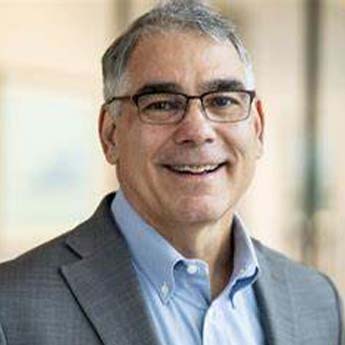Balancing act to invest for change
When Daryl Bible joined M&T Bank as CFO two years ago, CEO René Jones had a mission for him: to lead the organization’s structural transformation, adding transparency and accountability. The financial side of that transformation includes the introduction of new general ledger, forecasting, and profitability systems. “When complete in 2026, we will be the first large U.S. bank with all our financial systems in the cloud,” Bible says. “You can scale as much as you want in the cloud while keeping the same systems.”
That’s just part of a massive change program that sees M&T handling seven major strategic initiatives simultaneously, five of them nine-digit projects. New risk systems will enable the company to monitor credits, while two data centers are being developed in Northern Virginia and Chicago.
Change at this scale requires careful juggling of capital deployment and profitability, Bible admits: “The balancing act is trying to keep our businesses as tight as possible to allow us to make these investments.”
"We will be the first large U.S. bank with all our financial systems in the cloud."
Daryl Bible, CFO, M&T Bank
Maintaining the community approach
While every financial institution is going through digital transformation, M&T’s approach reflects its unique outlook, as a community-based bank whose 27 regional presidents have significant discretion in serving their markets. This is a key differentiator for M&T that won’t be compromised by company-wide infrastructure, Bible promises: “The real key is putting that structure in but still allowing the empowerment of these regional presidents to be able to customize.”
While it may not have the largest tech budget in the financial world, M&T deploys it in a characteristically distinctive way. Thousands of M&T’s tech engineers work together at dedicated buildings in Buffalo. “We believe that having them come into the office and work with our business partners, these agile teams can collaborate faster and better than working virtually,” Bible says.
Future-proofing finances
That loyalty goes both ways. It extends to serving clients while they are under stress, where some competitors might exit the relationship, says Bible.
As a result, M&T typically has relatively high numbers of criticized loans on its books in tougher financial times. That situation has improved in the past 18 months as many customers have seen their loans upgraded, Bible says, improving asset quality measures.
At the same time, M&T’s Treasury team has been able to shift the company from an asset-sensitive bank to a more neutral state. “We’ve done that by using interest rate swaps and increasing our investment portfolio,” Bible says. Regardless of future rate volatility, M&T’s net interest income will be steady, he adds.
Targets for expansion
Three years ago, M&T acquired Connecticut-based People’s United, a move that has successfully delivered a strong presence in New England and Long Island, NY. The bank’s priorities for expansion are now focused on these regions.
"The real key is putting structure in but still allowing the empowerment of regional presidents to be able to customize."
Daryl Bible, CFO, M&T Bank
M&T brings a unique offering amid the giants and the smaller players already in the market, Bible suggests. “Bringing our model to these places is going to be a really big benefit for the communities and customers, as well as for M&T. Right now, we’re doing it organically, but over time there could be opportunities for inorganic expansion,” he adds.
Asked about the principles for M&T’s future success, he points to the banking fundamentals: managing liquidity, prudently allocating capital, and operating with transparency.
Continuing to invest in technology and remaining a ‘favorite acquirer’ in the marketplace are also key. “If we do those three things really well, I think we’ll have a lot of success for many decades to come,” he predicts.

